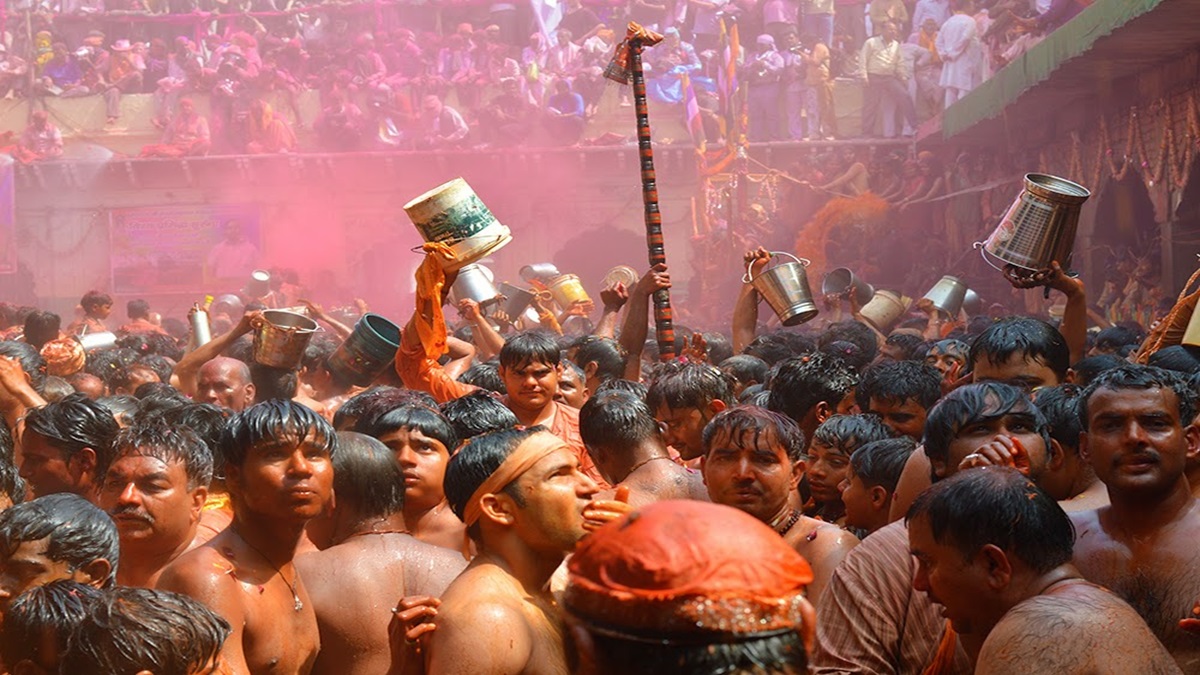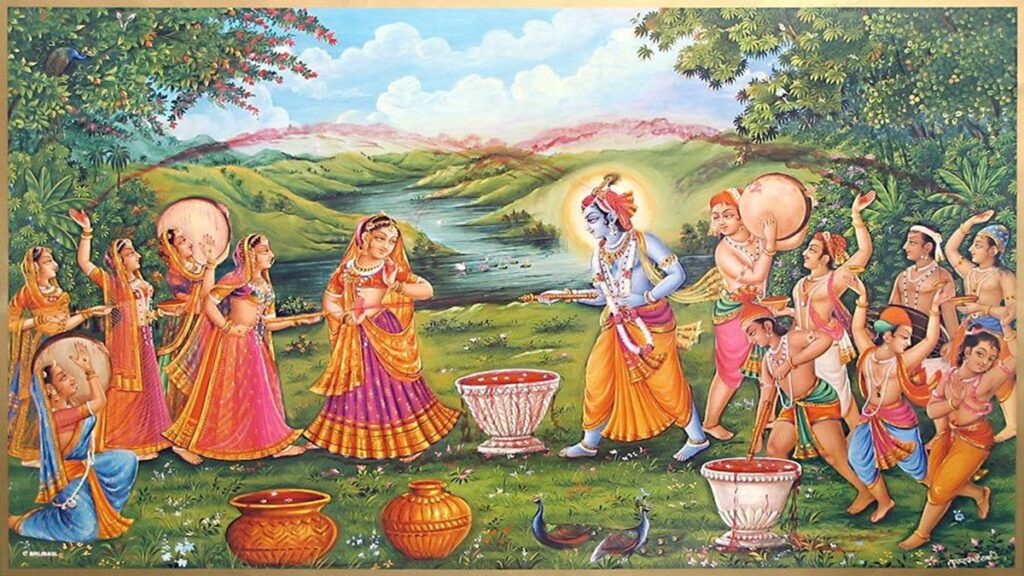
Holi is celebrated in celebrated in diverse forms in various parts of India. A 10-day Holi celebration called ‘Braj Ki Holi’ begins way ahead of the main Holi festivities and is a famous event in India. Vrindavan Braj has its unique traditions of celebrating Holi, be it ‘Lathmar Holi’ in Barsana to ‘Phoolwali Holi’ that takes place in Banke Bihari Temple in Vrindavan.
This year Holi falls on March 25 and a day later (March 26) ‘Huranga Holi’ is celebrated at Dauji Temple in Mathura. It is an annual event that lures people from all across the nation and is held at Mathura in Uttar Pradesh. Both men and women participate in the festivities. Men are called ‘Huriyare’ and women are referred to as ‘Huriyarin.’
History of ‘Huranga Holi’
The Dauji Temple in Baldev village located in Mathura celebrates ‘Dauji ka Huranga’, every year.
The festival is dedicated to Lord Baldev, who was the elder brother of Shri Krishna. Lord Baldev is also known as Dau ji Maharaj. Dau ji means “elder brother.” Lord Baldev, who was the beloved Dau ji of Shri Krishna was an incarnation of Sheshnag.

Huranga is a hostile version of playing Holi. According to Bhagavata Purana, Lord Krishna along with his beloved Radha and Gopis went to Barsana and Vrindavan to play Holi. But, one day, Krishna’s elder brother Baldev(Dau ji) decided to ditch Krishna and play Holi all by himself, thus creating mischief(huranga in local dialect) and performing Ras Lila for the gopis.
Therefore, every year devotees and visitors celebrate Huranga Holi in honor of Lord Baldev.
How is ‘Huranga Holi’ celebrated?
The men known as ‘Huriyare’ throw gulal and abeer at the women called ‘Huriyarin.’ The Huriyarins then playfully tear off the men’s clothes. The women then flog the men with the whips they have made out from the torn shirts of men and drench in the color and extremities of the festival together.

